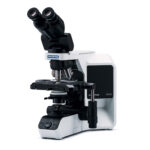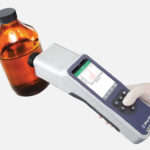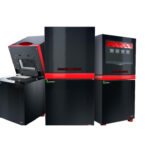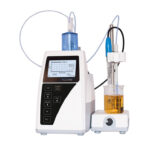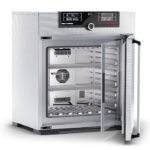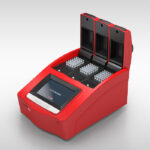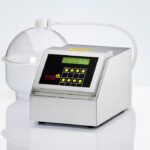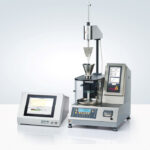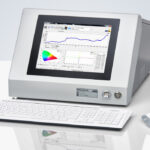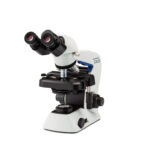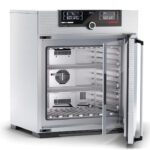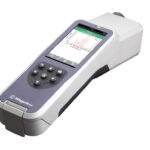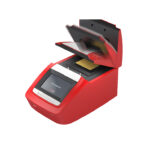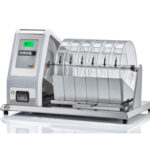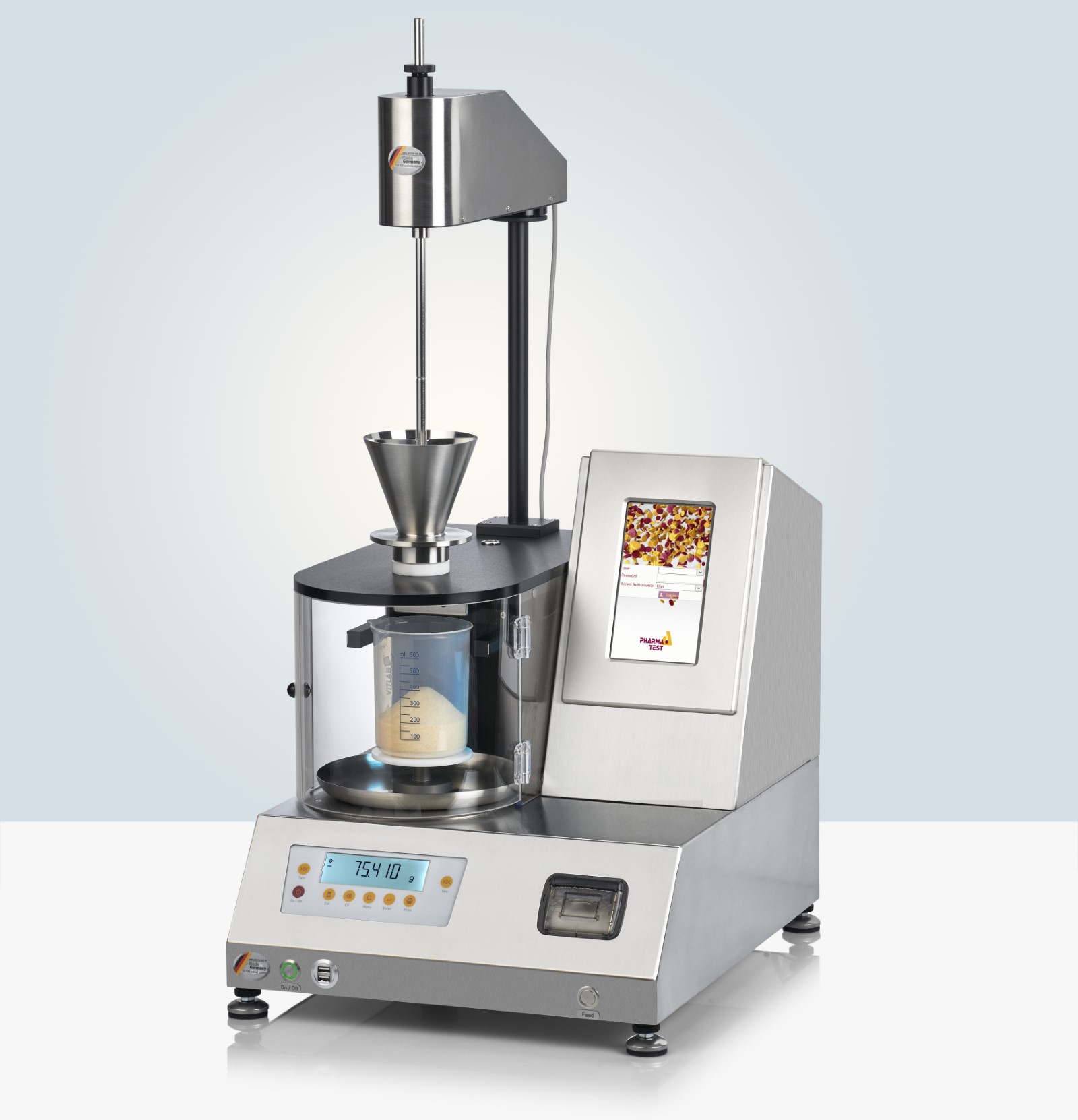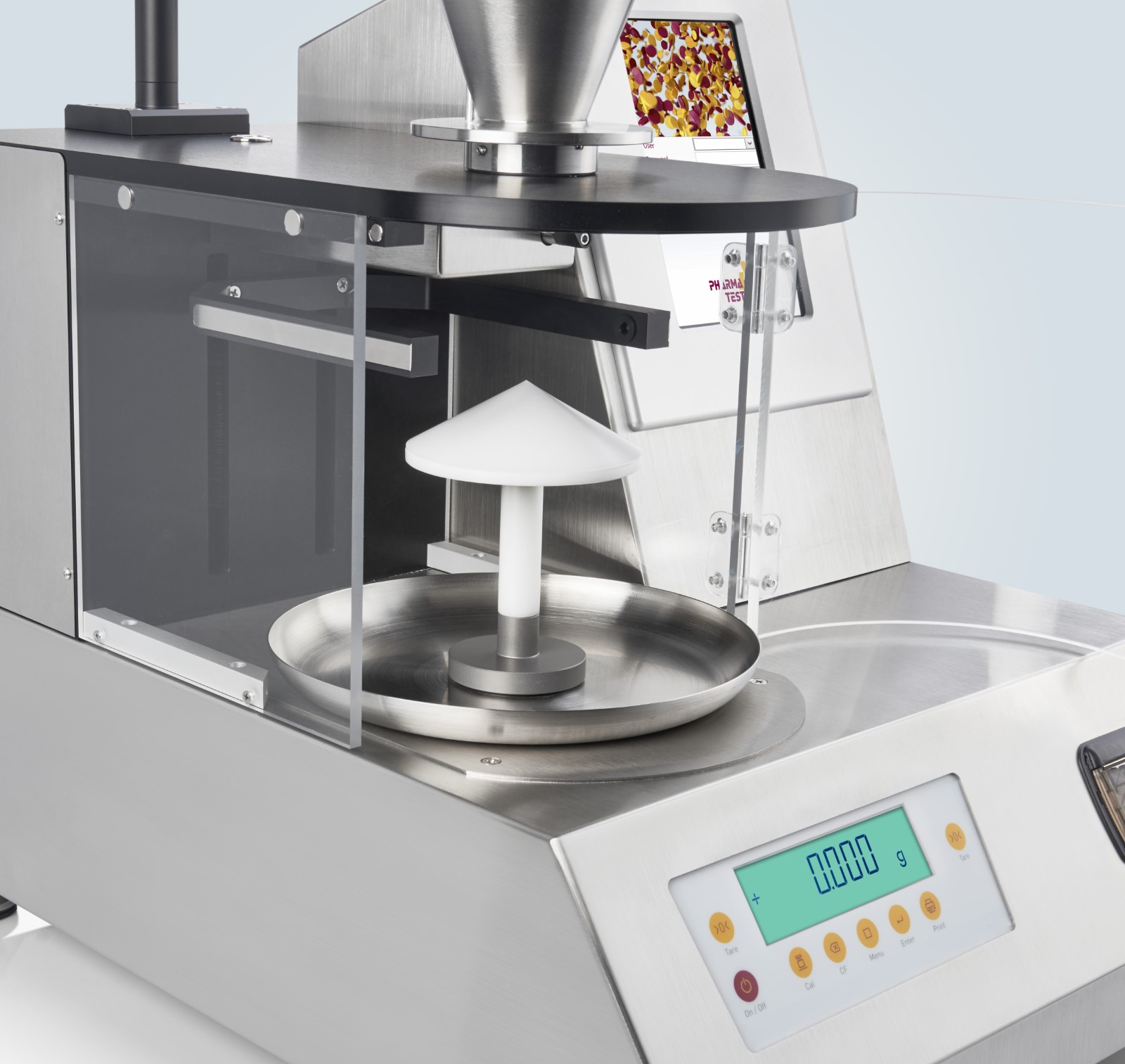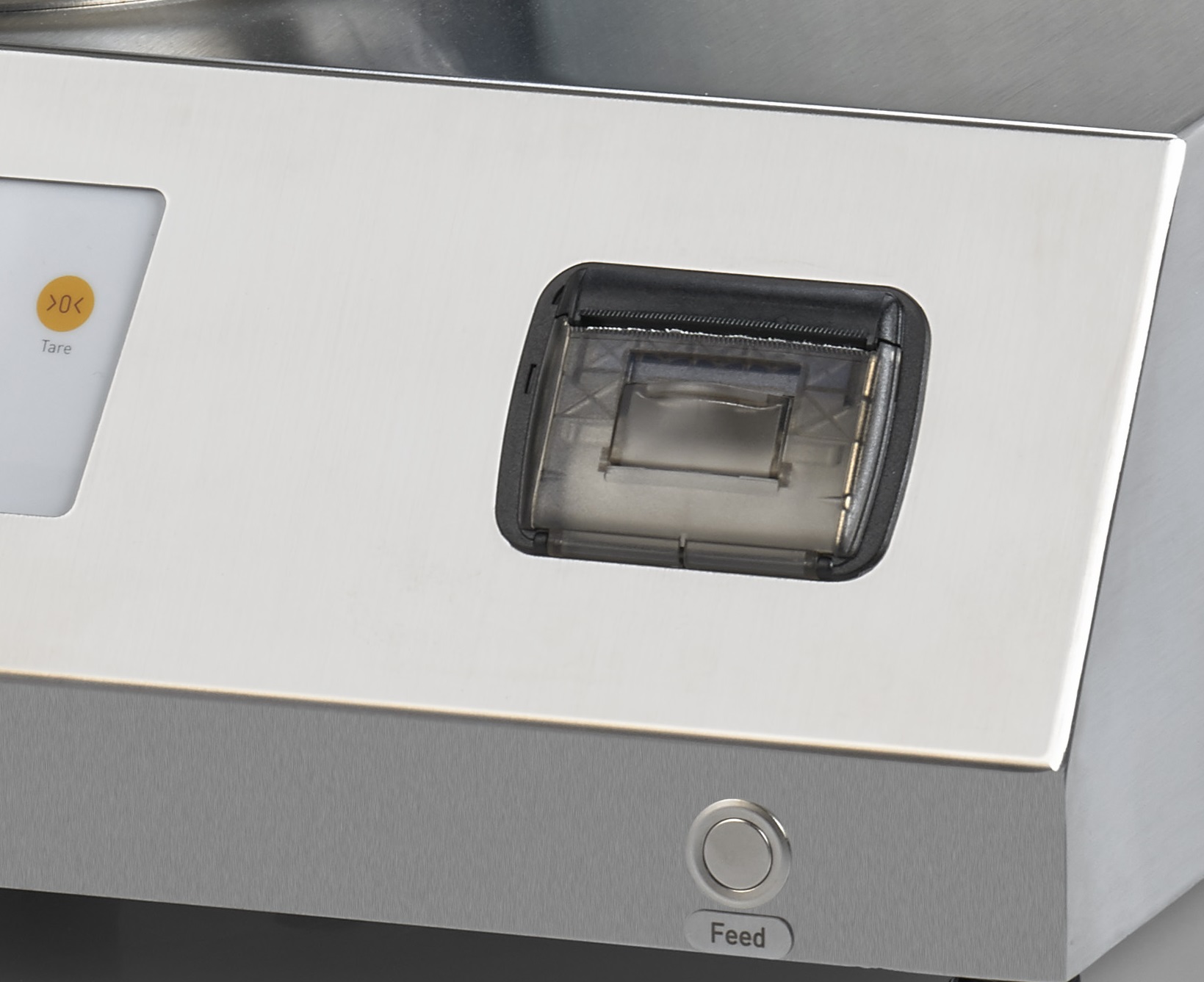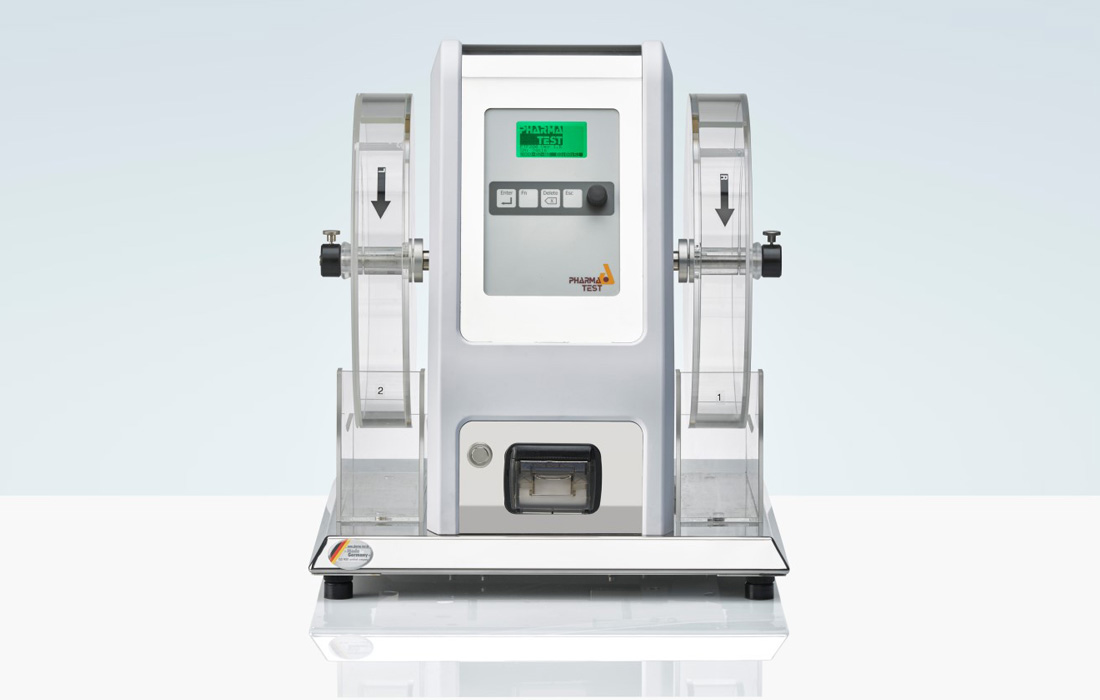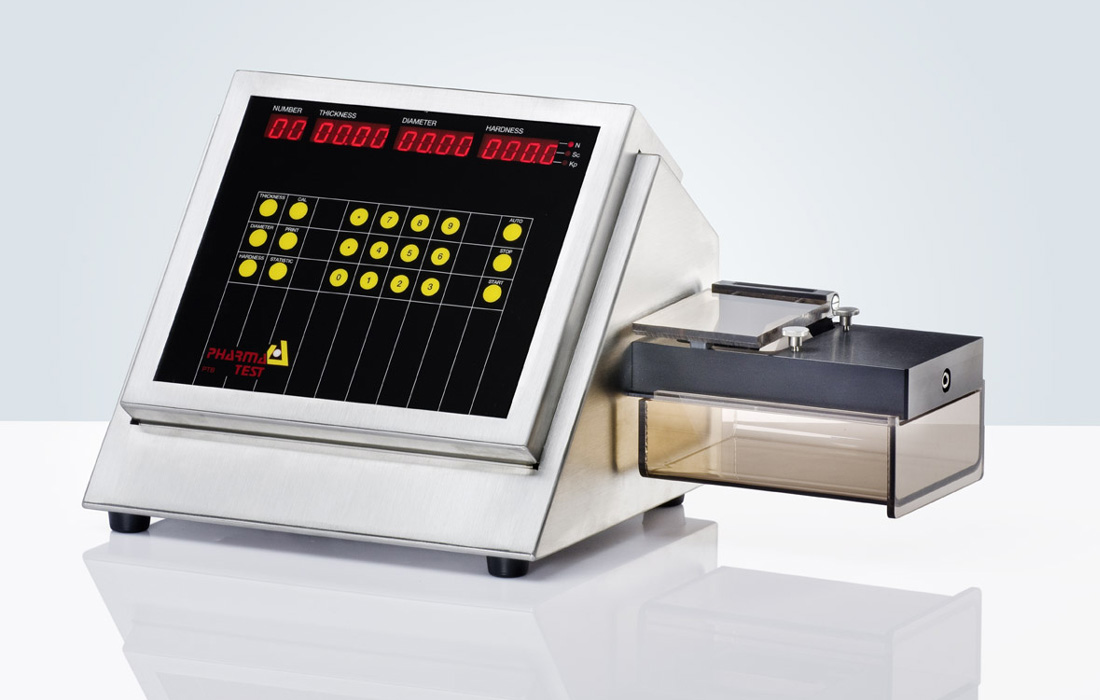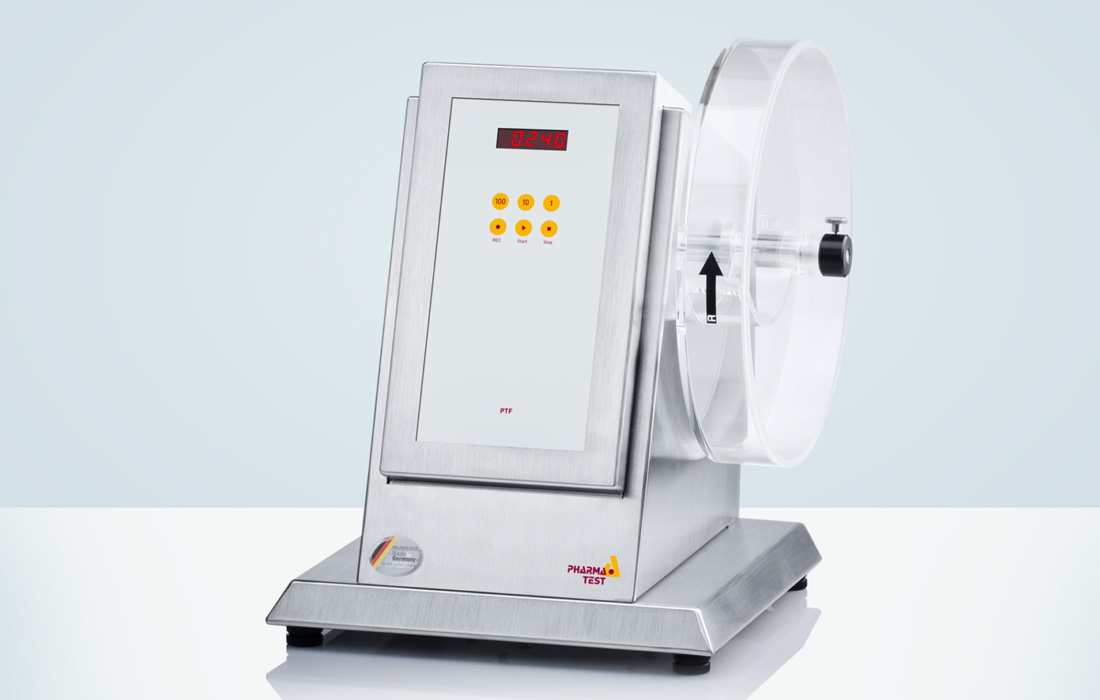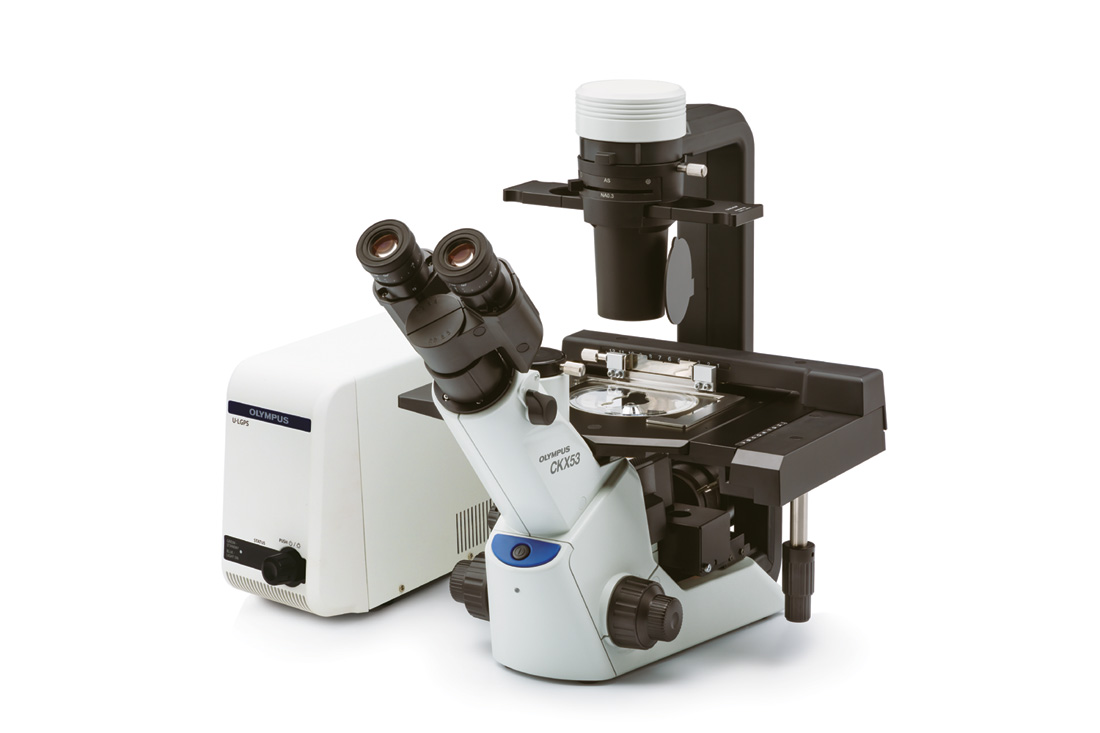PTG-S5
Automated Powder Flow Analyzer
Why Measure the Flow Properties of Powders?
It has been estimated that over 50% of the materials used in all industrial applications were at some stage in a powder form. These powders need to be transported, injected, propelled and be able to pass through various process stages before they achieve their final form. This final form may be a tablet, a suspension or indeed a powder formulation. The need to be able to measure, control or test for reproducible powder flow has been well established in many industrial applications. Powder flow characteristics are important for:
- Reduction in cost of raw process materials: reject bad batches before processing
- Maintenance of the optimum formulation for the process concerned
- Reduction in process costs
- Maintaining the quality and consistency of the final product
- Maintaining process efficiency and costs by optimization of product storage, packing, handling and transportation
- Maintaining powder quality from different suppliers or from the same supplier over a long time period
- Development of new processes where powders are required to be formulated into end products
- Checking moisture effects: use of powders in open systems in different climates
- Investigating and maintaining the quality of dry mixes
In processes, which rely on powder and / or powder, mix integrity, the need to have the correct powder flow characteristics is paramount. These powder mixes have to be formulated, mixed and certainly transported. Transportation, even over small distances an easily lead to classification of sorts such that “fines” may drop out and alter the particle size distribution and hence the flow characteristics.
For example, we can look at formulated mixtures, which are fed into tableting machines: these powders need to flow in exactly the same way from batch to batch. Generally, the active ingredients are materials that have no natural flow properties. They are sticky (cohesive) and prone to agglomeration. Additionally, the requirement of active material in ever decreasing dosages means that the active must be able to be dispersed in a non-active medium (normally made up of wellestablished and mainly natural products) in a reproducible way in the mixers prior to the introduction of the formulation into the tablet press.
The fact that the non-active materials such as MCC (Micro Crystalline Cellulose), starch and lactose are natural products means that these materials are prone to variations in particle size, agglomeration, surface area, and so on, depending on the product source. Then we have to consider the effect of the introduction of materials such as silica (e.g., Aerosil 300), which aid the flow of these normally quite stubborn powders. The need to control each of the components as well as the final mix now becomes clear. Control of this type can save a lot of time, wasted money and resources if checks are made at the right time on these component powders.
Operating Principle of the PTG-S5
The PTG-S5 is widely used to compare batches of powders perhaps supplied by the same manufacturer over a period of time or for similar materials provides by different suppliers. The flow characteristics can be easily and quickly determined as a QC tool for inter- batch reproducibility, as this may have a distinct bearing on the ease of production especially if powders are capable of agglomeration and cohesion over time.
Design
The design is compliant to the ISO 4324 (12/83) standard, EP <2.9.36>, and USP <1174>. A conical funnel, which can be equipped with different pouring nozzles, takes the sample to be tested. A built-in analytical Sartorius balance cell takes the product collecting dish. The PTG-ER electrical stirrer may be used for powders, which do not flow well. Most pharmaceutical material contains such a high amount of fine particles that it will not start to flow without assistance.
The Test Procedure
Then start the test. Depending on the powder, the PTG-ER stirrer may be used. When the test is started, the funnel is opened and two IR sensors detect the powder flow, this will start the timer to measure the flow time and to record the flow chart. The product itself is collected on a 100mm diameter dish and forms a cone. Once the powder flow stops, the funnel is closed and the movable measuring arm, which holds the two infrared sensors, starts to measure the height of the cone up to the tip. Since the surface of the collecting dish is completely filled, the cone angle can be calculated and displayed.
The test should be repeated (in accordance to the ISO 4324 five times) and the deviation of results should not exceed 5%. The test results are displayed on the color touch screen display of the PTG-S5. A test report and powder flow-chart will be printed including descriptive information of the product. The report is printed either via the built-in thermal printer or using any Microsoft Windows compatible printer connected directly to the instrument by USB or through a network.
Measure
To measure the flowability as per EP <2.9.16> and USP <1174> the test is automatically stopped as soon as 100g of sample have been collected inside a plastic beaker. In addition to the flowability factor (100g/t) the powder flow chart can be printed. The standard instrument comes with all attachments to measure flow-time, cone angle and flowability in compliance to the current EP/USP. Different pouring nozzles from 4 – 10 mm can be used to test the product. A stirrer can be used to force nonflowing product through the selected pouring nozzle.
Additionally, a graph can be plotted on the built-in printer showing the flow behavior of the sample under test. Using the conical stainless steel funnel as described in the current EP/USP monograph and use the changeable nozzles of 10, 15 and 25mm, the cone angle can also be tested. If smaller diameter nozzles are to be used, an adapter ring, which allows the use of pouring nozzles from 4 to 10mm, is available.
Testing Smaller Volumes
For smaller volumes, a 10ml funnel and a smaller sample-collecting dish are available. This optional accessory can be used with pouring nozzles from 4 to 10mm diameter. A suitable stirring shaft completes the set.
The PTG-S5 Analysis
The PTG-S5 determines the following results:
- Powder flow time of a pre-defined mass
- Powder cone volume
- Powder cone density
- Cone angle (angle of repose according to EP <2.9.36>, USP <1174>)
- Flowability of 100g of product (according to EP/DAB <2.9.16>, USP <1174>)
- Amount of sample (mg in a preset time)
- Flow chart of sample (mg/time)
Printer
The data and results are displayed on the color touch screen, are stored in a database and can be documented as hard copy printouts using either the integrated protocol printer or an external printer connected by USB or LAN.
Features
- Fully USP <1174>, EP <2.9.36>, EP <2.9.16 and ISO 4324 (12/83) compliant
- Measure flow-time, cone angle, flowability, cone density and cone volume
- PTG-ER stirrer included
- Integrated analytical balance cell
- Integrated dust protection bonnet
- Built-in printer
